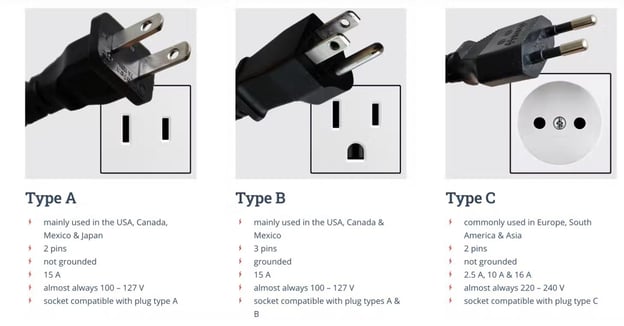Businesses are no longer bound to sell only in the country they live in, nor do they need to open up a physical storefront to succeed in a new market. The internet has given store owners (even smaller ones) the opportunity to enter different (and multiple) markets successfully.
But, there are many things you need to consider when creating a multistore to sell to a different target audience. One example is localizing content. Studies show that 87% of online shoppers won’t purchase a product if they do not understand the language of a website.
This shows that you have to localize the product information.
What is product localization?
Product localization goes beyond translating basic product information such as product titles to the language of your new target audience. For instance, you can’t simply change “gym wear” to “vêtements de sport” when entering the French market. It’s about modifying or adapting your product and making it resonate with a specific region. This means adapting to the language, cultural nuances, cultural differences, societal and behavioral characteristics, date formatting, currency, units of measure, colors, graphics, and more. There are so many brands that experience challenges when creating a multistore because they didn’t understand the extent of localization. CSA Research also shows that 60% of non-native English speakers hardly go to English-only sites, and they expect a seamless shopping experience even if it’s not a local brand. If you want to make a success out of your multistore, you can’t skip over this process.
Here is how you can localize your ecommerce product for a new market;
1. Start with linguistic localization
Linguistic localization, or language localization, is the process of translating your product information to cater to your specific target audience. This means translating product titles, descriptions, help guides, marketing material, and any other consumer-facing data.
Depending on the market, you may need to rework your entire user interface to ensure it better fits local expectations. As mentioned above, between 60 to 80% of online shoppers won’t even bother purchasing from a website that isn’t in their native language, so it’s a key component to winning customers over.
Remember, you aren’t only competing with your known competitors who have multistore, but also with local shops. Studies have shown that as a result of the pandemic, 70% of consumers are into supporting local businesses right now whether it’s online or a mix of online and in-store. To break into a new market, you need to sell your products as an actual local brand.
2. Customize your software and hardware to fit the new market
Whether you’re selling a product or service, you will need to customize your software or hardware to meet your new target market. For example, let’s say you sell an appliance with a United State adaptor, and you’re entering the French market; you would need to customize the appliance to fit as they use plug types C and E, whereas the US uses types A and B.

When you don’t customize for the specific region, you’re ruining customer experience as a customer would have to go through hoops to be able to use your product. But customization doesn’t just need to be hardware, it can be converting product sizes and pricing to fit the new market to create an easier shopping experience. According to this article, 89% of shoppers have switched to a competitor after a bad experience, and 64% of customers believe customer experience is a determining factor when buying a product over the price. So, make sure your product or software is localized to cater to your new market.
3. Adapt your branding to the culture
When you localize a product, it’s not just about the translations and changing the text—colors can play a huge role too. The meaning of colors is different for every culture, and these beliefs often stem from religion, spirituality, and social or historical events. You need to be aware of this. For example, red represents love in Europe and North and South America. But, it can have totally opposite meanings in other countries, such as China, which sees the color red as a representation of luck and fertility. In some African cultures, it can symbolize death and grief.
So, it’s crucial to take all these factors into consideration.
When branding your product in a new market, be mindful of your words and the colors you’re using. This article says, “color can increase customers’ positive response to a brand by 80%.”
Here is an example of how Algida, an ice cream brand that switches between red, orange, and blue to adapt to different countries.

Or how Ikea has done it. (See below)
Image 1 is for the Austrian/German website. Yellow has a negative connotation in this region, so they opted to only keep it in the logo. On the other hand, in Bulgaria (image 2), yellow has a positive connotation and is seen as a color of happiness, which is why they added more yellow to their “free delivery” box. According to NRF, “60% of shoppers expect free shipping from retailers. Online purchases are actually encouraged by free shipping. 79% of consumers say free shipping makes them more likely to shop.” Best believe Ikea was aware of this and used it to their advantage to create a better customer experience for their Bulgarian customers.

4. Follow the local laws and customs
When it comes to multichannel sales management, it’s not just about how the product or website looks to the customer but also about abiding by a country's tax requirements, warranties, and other legislations. You also need to know the laws and regulations around return policies, as 30% of products ordered online are returned. However, 92% of customers say they will purchase from a brand again if the return process is easy, and 79% want free return shipping. This is why it’s important to know the local laws to keep customers happy.
5. Optimize your product pages
You can have the best product with beautifully translated content and ensure that you understand all the nuances of a country. But if you don’t focus on search engine optimization (SEO) and product listing optimization (PLO), customers will have a hard time finding you. SEO, particularly, local SEO, will help improve your visibility in the area. PLO, on the other hand, goes beyond just search. It’s about tailoring your pages to rank higher and sell more.
For local SEO, you’ll need to;
- Perform competitor research
- Have one single domain with individual pages for each of your locations to rank well in search engines
- Create location-specific content
- Encourage local reviews
- Consider using local phrases when marketing your product, for example, you can’t use the keyword “sweater” in the UK as they refer to it as a “Jumper”.
For PLO, you’ll need to;
- Make use of high-quality images and videos to help sell products
- Have more than one image for each product
- Incorporate keywords in the page's title tags and product descriptions
- Encourage customer reviews, and share them online
- Make sure you have rich product descriptions and information to help convert customers
You’ll need a product content management system for this
As you can see, managing multistores or entering a new market requires a lot of content.
Without a PIM system, managing the different translations of product descriptions, measurement formats, images, videos, and marketing data will soon become a nightmare. Especially if you sell via Shopify/ Although it’s a great ecommerce platform, it does have some limitations when it comes to localization. But you can overcome these challenges with a PIM for Shopify. With our ecommerce product catalog management system, you don’t just have a single source of truth to store all your product content. But you also achieve product syndication using our Channels module, where you can send it to various stores. It’s also worth mentioning that Plytix has DAM capabilities, which allow you to store all of your digital assets.
Plytix is one of the best PIM for small businesses not only because it makes multichannel distribution easier, but it is also one of the most affordable PIM solutions on the market.
Don’t believe us? View our pricing page or request a demo today, and we’ll tell you all about it.
You can also download this free ebook to help learn how to sell more wherever you sell.




